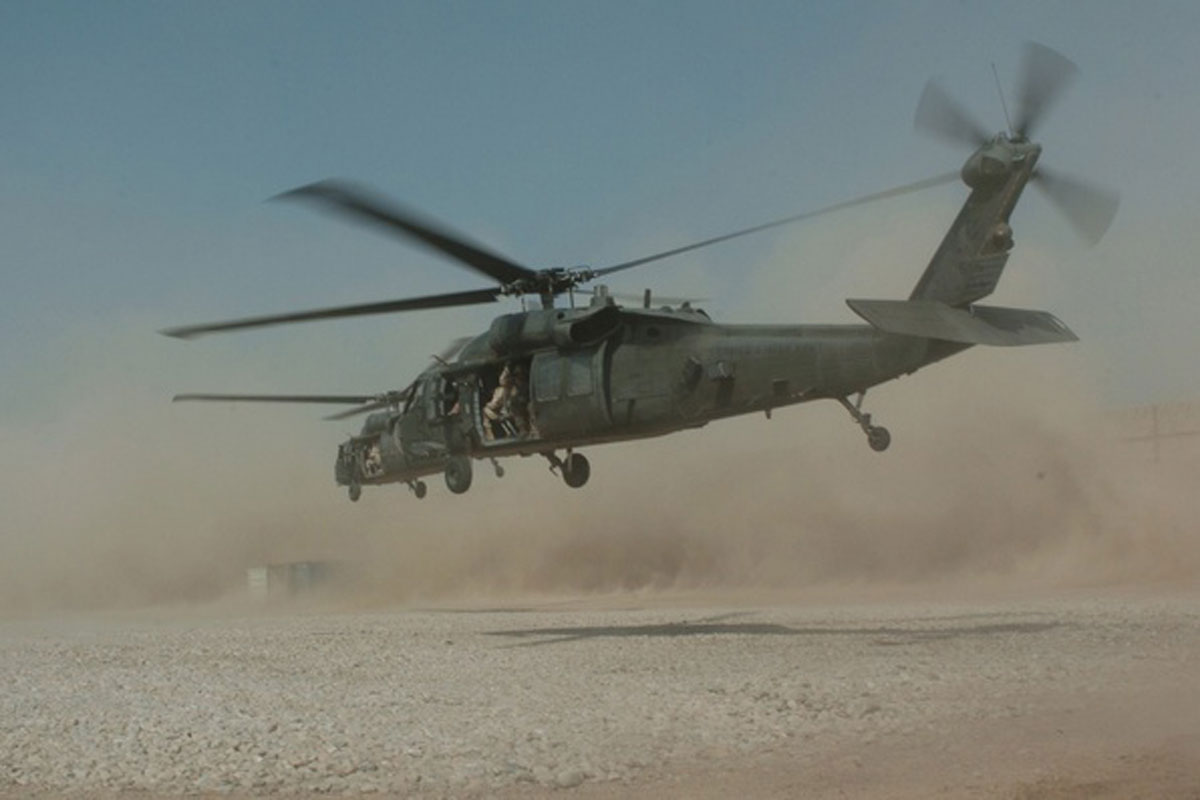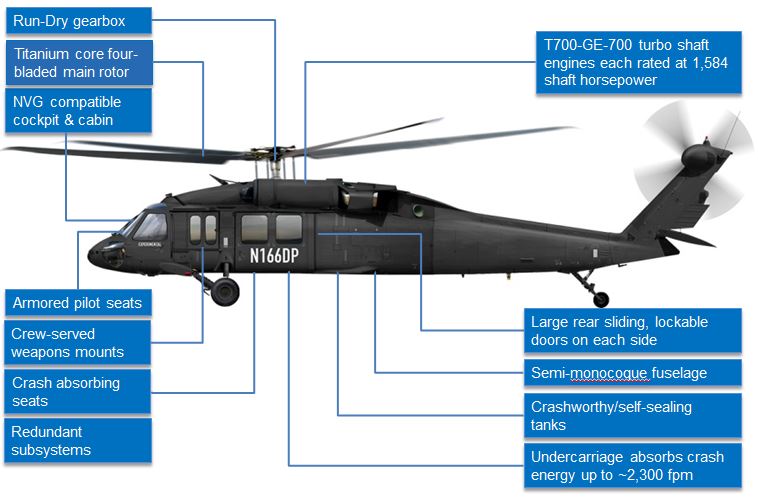Specialist Insights: Enhancing Performance in UH 60 Helicopter Workflow
Specialist Insights: Enhancing Performance in UH 60 Helicopter Workflow
Blog Article
Understanding the Mechanics and Engineering Behind Uh 60 Helicopters
The UH-60 helicopter, commonly recognized as the Black Hawk, stands as a peak of modern-day rotorcraft technology, personifying a blend of durable engineering and detailed technicians. As we peel off back the layers of the UH-60's design, a world of detailed systems and meticulous design comes to light.
Background of UH-60 Helicopters
The background of UH-60 helicopters traces back to the late 1970s when the United States Army looked for a functional and sophisticated energy helicopter to change its aging fleet. In response to this need, the Sikorsky Airplane Corporation created the UH-60 Black Hawk helicopter. Introduced in 1979, the UH-60 promptly ended up being a staple in armed forces procedures as a result of its excellent abilities.
The UH-60 was created to stand out in a variety of goals, consisting of army transportation, medical evacuation, digital warfare, and special procedures. Its ability to adapt to different functions made it a beneficial possession to the U.S. uh 60. Army and various other army forces worldwide
Throughout the years, the UH-60 platform has actually undertaken several upgrades and variants to boost its efficiency and equal advancing goal requirements. These helicopters have seen comprehensive service in conflicts such as the Gulf War, Afghanistan, and Iraq, showcasing their reliability and flexibility in varied operational atmospheres. The UH-60's abundant history is a testament to its long-lasting legacy as a leading energy helicopter.

Engine and Power Solutions
Utilizing advanced propulsion innovation, UH-60 helicopters are outfitted with advanced engine and power systems to make sure optimal efficiency and reliability in a variety of functional situations. The UH-60, generally understood as the Black Hawk, is powered by two General Electric T700-GE-701D engines, each capable of providing up to 1,940 shaft horsepower. These turboshaft engines offer the needed drive for the helicopter to perform its missions successfully, including army transport, clinical discharge, and fight assistance.

Blades System and The Rules Of Aerodynamics
Exactly how do the rotor system and aerodynamics of UH-60 helicopters add to their operational performance and trip capacities? The blades system of the UH-60 helicopter plays an essential role in offering lift and propulsion.
Aerodynamics also play a vital duty in the efficiency of UH-60 helicopters. The streamlined fuselage and rotor blade layout lower drag, enabling the helicopter to accomplish greater rates and much better fuel effectiveness. The aerodynamic layout of the UH-60 additionally adds to its capability to run in varied ecological problems, including high altitudes and hot temperature levels.
Avionics and Flight Control Equipment

In its intricate coordination with the rotor system and the rules of aerodynamics of UH-60 helicopters, the avionics and flight control systems create a crucial network of modern technologies shaping the airplane's functional capacities. In the UH-60, these systems include digital screens, interaction radios, General practitioner navigating, weather condition radar, and auto-pilot systems.
The flight control systems of the UH-60 are accountable for translating the pilot's inputs into the ideal changes to the rotor system, ensuring stable trip and maneuverability. These systems include hydraulic actuators, servos, and computers that interact to manage the primary and tail blades, as well as other trip control surface look at here areas. By specifically managing the helicopter's trip characteristics, these systems make it possible for pilots to perform a variety of missions, from transport and search-and-rescue to combat operations, with precision and confidence.
Role and Applications in Aviation
The role and applications of avionics and trip control systems in aeronautics are indispensable to making certain the secure and effective operation of airplane, including UH-60 helicopters. Avionics systems in UH-60 helicopters incorporate a series of digital systems that help in navigation, communication, surveillance, and managing various airplane features. These systems include electronic screens, auto-pilot systems, interaction radios, GPS navigation devices, and weather radar. Trip control systems play an important function in navigating the helicopter airborne, maintaining stability, and making certain accurate movements. The fly-by-wire innovation used in contemporary UH-60 helicopters equates pilot inputs right into digital signals, which are then translated by the trip control computers to change the try this out aircraft's control surfaces. Furthermore, these systems incorporate safety and security attributes such as auto-pilot modes, terrain recognition warning systems, and security enhancement systems to improve the total security and operational abilities of the UH-60 helicopters in numerous objectives, including troop transport, clinical emptying, search and rescue, and airborne firefighting.
Verdict
In final thought, the UH-60 helicopter is a functional airplane with an abundant background and advanced engineering. Its engine and power systems, blades system, aerodynamics, avionics, and flight control systems all work together to make it a efficient and trusted maker. The UH-60's function and applications in air travel are substantial, ranging from military procedures to browse and rescue goals. Its proceeded advancement and use demonstrate its value in the area of aeronautics (uh 60).
In its elaborate control with the blades system and aerodynamics of UH-60 helicopters, the avionics and trip control systems develop a critical network of technologies forming the aircraft's operational abilities.The trip control systems of the UH-60 are responsible for equating the pilot's inputs right into the ideal changes to the rotor system, making sure secure trip and maneuverability. Avionics systems in UH-60 helicopters incorporate an array of electronic systems that help in navigation, interaction, monitoring, and regulating different aircraft functions. Additionally, these systems include safety features such as auto-pilot settings, surface recognition alerting systems, and security enhancement Bonuses systems to enhance the total safety and security and operational abilities of the UH-60 helicopters in different missions, including army transportation, medical evacuation, search and rescue, and aerial firefighting.
Its engine and power systems, rotor system, the rules of aerodynamics, avionics, and flight control systems all function with each other to make it a trustworthy and effective device.
Report this page